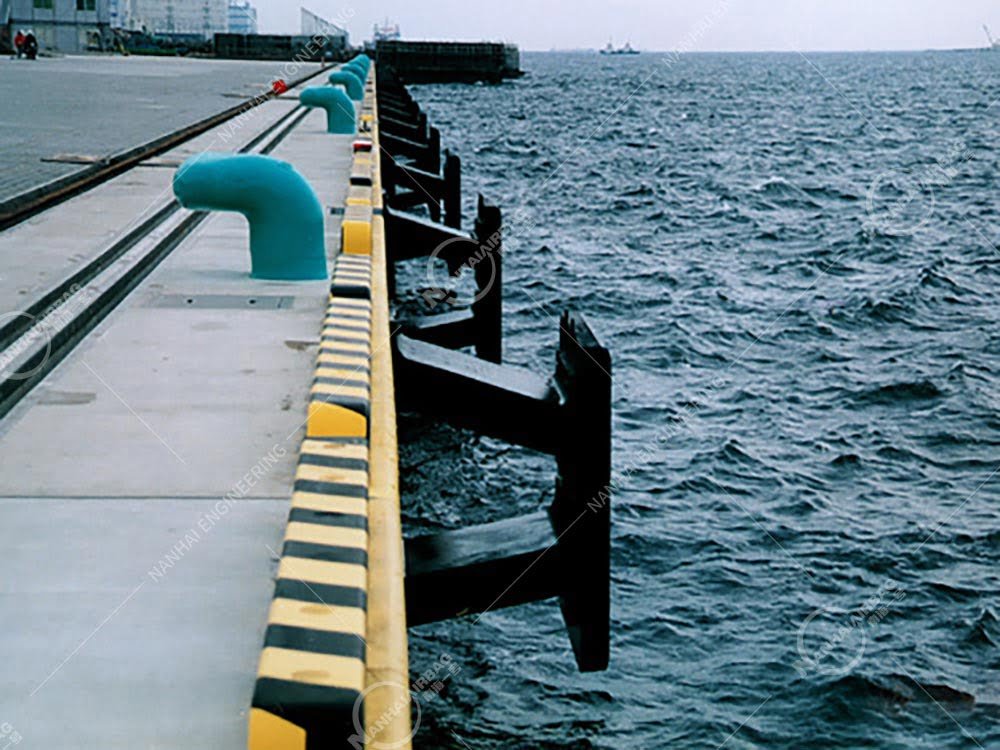Super Cone Fenders: The Marine Safety Upgrade That Stops Damage, Saves Money, and Ends Downtime
18/11/2025
Last year, Tina—manager of Harbor Lights Marina on Puget Sound—stood ankle-deep in seawater, staring at a shattered rubber fender and a cracked dock piling. A 45-foot sailboat had hit the dock during a storm, and the old, single-piece fender had split clean in half. Repairs cost $12k, the boat’s owner threatened to sue, and Tina spent weeks fielding complaints from tenants. “I was ready to rip out every fender and start over,” she admits. “Then I found Unit Element Fixed Rubber Fenders—and everything changed.”
What Exactly Are Unit Element Fixed Rubber Fenders? (Modular Protection for Your Dock)
Let’s cut through confusion: Unit Element Fixed Rubber Fenders are pre-assembled, modular rubber fenders designed to attach permanently to docks, pilings, or seawalls. Unlike traditional “monolithic” fenders (single pieces that crack or rot as a whole), they’re made of interlocking rubber “units”—each section absorbs impact independently. Think of them like Lego bricks for dock safety: durable, customizable, and easy to fixwhen damaged.Each unit is crafted from high-density natural rubber blended with UV-resistant and ozone-proof additives—built to withstand saltwater, sun, and ice. They come in standard sizes (12”–24” wide) but can be trimmed or stacked to fit any dock layout—small slips, marina basins, or even offshore platforms.
Why This Isn’t Just an Upgrade—It’s a Dock Survival Strategy (Urgent Examples)
You might think, “My old fenders work fine.” But today’s waterways are anything but forgiving:
- •Boats are bigger: The average U.S. recreational boat grew 12% in length since 2018—meaning more weight and force hitting your docks.
- •Storms are fiercer: 2023 saw record hurricane damage; a Florida marina lost $250k in repairs after traditional fenders shredded in 100mph winds.
- •Downtime kills profits: A single damaged fender can shut down a slip for days—costing a busy marina 500–1k/day in lost rent.
Tina’s marina was on the brink—until she switched to Unit Element Fenders. “The first test came last month,” she says. “A 50-foot yacht hit a piling hard. Only one unitbroke—and I replaced it in 10 minutes with a spare. No downtime, no lawsuits, no angry tenants.”
Why Unit Element Fenders Beat Traditional Fixed Fenders (No More Guesswork)
Unit Element Fenders solve the core problemsof old-school fixed fenders:
1. Modular = Easy Repairs
Traditional fenders? If one part cracks, you replace the whole thing—costly and time-consuming. Unit Element lets you swap individual units—so repairs take minutes, not days, and cost 70% less.
2. Built to Outlast the Elements
Each rubber unit is reinforced with polyester cords and treated to resist UV degradation. Tina’s fenders have survived two winters and three storms—no cracking, fading, or rotting.
3. Cost-Effective Long-Term
A Unit Element Fender costs 20% more upfront than a traditional fixed fender—but lasts 3–5 years longer. Tina calculated: Over 10 years, she’ll save $18k in repairs and replacements.
4. Versatile for Any Dock
Stack them to protect high-traffic corners. Trim them to fit narrow slips. Mix and match sizes for irregular piers. They adapt to yourdock—not the other way around.
Real Talk: A Marina Manager Who Finally Relaxes
Tina’s marina used to be a “problem child”—constant repairs, unhappy tenants, and lost business. Now? “Tenants choose us over neighboring marinas because they know the docks won’t fail,” she says. “We even got a new contract with a yacht club—they love how easy the fenders are to maintain.”Her advice? “Stop wasting money on fenders that break. Unit Element is an investment in peace of mind.”
People Also Ask: Your Unit Element Fixed Rubber Fender Questions—Answered
We get these queries daily—here’s the straight scoop:
Q: How are Unit Element Fixed Rubber Fenders different from regular fixed fenders?
A: Regular fixed fenders are single-piece—crack or rot, and you replace the whole thing. Unit Element uses interlocking rubber units—swap one damaged section, not the entire fender. They’re modular, easier to fix, and last longer.
Q: Why choose modular fenders over monolithic ones?
A: Modular = cost-effective repairs, customizable fit, and better durability. If a boat hits hard, you don’t have to replace the entire fender—just the unit that took the hit.
Q: How long do Unit Element Fenders last?
A: With basic care (rinse with fresh water, check units quarterly), 10–15 years. The UV-resistant rubber and reinforced core don’t degrade like cheap alternatives.
Q: Do they work with marine airbags?
A: Yes—and they complement each other perfectly. Marine airbags handle ship launching/lifting; Unit Element Fenders protect docks and vessels daily. Together, they form a complete marine safety system.
Q: Are they worth the upfront cost?
A: 100%. Let’s math it: A traditional fixed fender costs 300andlasts5years(60/year). A Unit Element Fender costs 360andlasts12years(30/year). Over a decade, you’ll save $300+—plus avoid costly downtime and repairs.
Final Thought: Stop Replacing Fenders—Start Protecting Your Dock
Unit Element Fixed Rubber Fenders aren’t just a “better” fender—they’re a smarterway to protect your dock, your boats, and your bottom line. For marinas, private docks, and commercial ports, they mean:
- •Fewer repair bills
- •Happier tenants/clients
- •No more downtime from fender failures
- •Long-term savings that add up fast
If you’re tired of replacing fenders every season or watching storms destroy your infrastructure, it’s time to upgrade. Measure your dock’s slip size, check your vessel weights, and reach out to a trusted manufacturer.Your future self will thank you—when you’re grilling on the dock instead of fixing rubber, and when boaters rave about how safe your marina is.That’s the Unit Element difference.Keywords: Unit Element Fixed Rubber Fenders, marine fenders, rubber fenders, marine airbags, dock protection, modular rubber fenders, durable marine fenders, marina supplies
